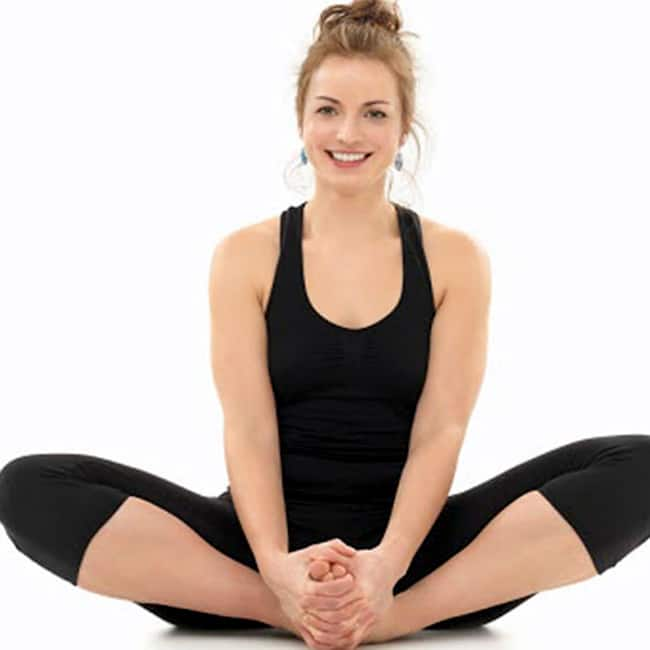
Sanskrit means "unite" or "join". Yoga's origins are from Sanskrit. This union refers either to a union or fusion of mind and bodies, or to the integration of individual consciousness with universal consciousness. Yogaic practice was widespread in India during the early years of the 20th century. Lord Shiva was the first known Yogi. He disseminated it via his writings. These books were translated into many different languages, and spread to diverse regions throughout the world.
As yoga became more popular, it wasn't uncommon for the practice to be seen as more westernized, particularly in Europe. The widespread availability of yoga videos began in the early 1900s with the introduction of VHS tapes (and DVDs) to help. Yoga was quickly and widely popularized in America thanks to the growing fitness industry and the Internet. The invention of the microphone in the 1990s and transatlantic flights made it possible for ideas to be spread widely and reached large audiences.
The history of yoga dates back thousands upon thousands of years. Although it was initially practiced to attain spiritual goals, Westerners became aware of it only in the second half of the 20th century. Swami Vivekananda was an Indian monk who traveled throughout Europe and the U.S. in order to spread the practice. He eventually taught yoga to the West, where it has been popularized in modern times. This is a great place to learn about yoga's historical roots.

Yoga can be traced back to northern India, where it was first practiced in ancient times. The Vedas (the oldest of the four Vedas) contain references to the practice. The Rig Veda is home to over 1000 hymns as well as 200 mantras. The Rig Veda was used by priests of the Vedic age to learn about the different positions and postures of yoga. Later centuries saw many Rishis refine the practice and bring it into the 21st century. The Upanishads provide great information about yoga's history.
Yoga history started with ancient Indian yoga being mentioned. The practice evolved to include asanas or physical postures. Hatha yoga became popular in the U.S. in the 1900s. Many teachers added asanas into their classes. In the 1970s, the practice gained acceptance worldwide. Yoga's popularity and spread was fueled by its birth in the United States.
Yoga has a complex history. Its roots can be traced back to 2000 BC, when the practice primarily focused on mind. Later, western gymnastics influenced the practice and the first Hathayoga practices were created. The practice developed into Hatha yoga in the 1920s. Today, asanas serve as a tool for achieving this goal.
Yoga's history has roots in ancient India. Yoga was practiced thousands of year ago and was vastly different from Vinyasa yoga classes today. However, by studying the history of yoga, you will be able to appreciate it more and understand it better. It is important to note that ancient yoga was not the same practiced as modern-day Yoga. Yoga's origins can be traced back thousands years ago and will help you to appreciate the practice more deeply.

A rich tradition of yogic practices can also be found in the history of yoga. The ancient yogis were largely Hindu, but they were influenced by the Hindu culture. Yoga was banned in the west by the British. It was only after this that the practice of yoga spread throughout Europe and the US. In the late 1800s, yoga was brought to America by gurus from India. Asana is a form or meditation.
Asana, the foundation of most yoga practice, is important. Asana practice is ancient. In the 5th century, the practice of yoga was a spiritual and religious practice. Jainism was also included in the ancients. The Classical Period saw the first systematic presentation, in English, of yoga practices and beliefs based on Jainism and Hinduism. The popularity and influence that yoga enjoyed over the centuries was never diminished. As with any new practice however, the roots of yoga are still rooted in the exact same principles and ideals.
FAQ
Cardio Exercise: Good or Bad for Your Health?
Cardiovascular exercise can have many benefits. It improves blood circulation, strengthens your heart muscle, increases stamina, helps you lose weight, and gives you energy.
Cardiovascular exercise includes running, biking, hiking, swimming, tennis, basketball, soccer, volleyball, football, etc.
Cardio exercises should not be done at high intensity. This could cause injury.
Only do the cardio exercise when you are feeling good.
Never push yourself past your limits. You could injure yourself if you do.
Warm up is the best way to start cardiovascular exercise. You can then gradually increase your intensity.
Listen to your body. If you feel pain during cardiovascular exercise, stop immediately.
After a cardio workout, it is a good idea to take a break. This gives your muscles the chance to heal.
Cardiovascular exercise is a great way to lose weight.
It is the best way for you to lose calories and decrease belly fat.
What is the best work out for men aged 40+?
The best exercise for older men is one that gives them more energy, and increases their stamina.
It is important to remember that most people over 40 experience a decline in testosterone, leading to lower sex drive.
You can still exercise, however. Research has shown that exercise regularly can increase testosterone in men.
You can improve your sexual performance by starting an aerobics program.
How to build muscles quickly
The best way to quickly build muscle is to eat healthy and exercise regularly.
When you're fresh and ready to do something, early morning is the best time for working out.
Try exercises like squats and bench presses.
Use different weight training techniques and drink plenty water throughout the day.
Statistics
- Get free shipping and 25% off today. (healthline.com)
- Cardmembers earn 5% Back at Amazon.com with a Prime Credit Card. (amazon.com)
- According to the American Heart Association, blood pressure should be checked at least once every two years, beginning at age 20. (my.clevelandclinic.org)
- The PRS enabled risk stratification for overall prostate cancer and lethal disease with a four-fold difference between men in the highest and lowest quartiles (HR, 4.32; 95% confidence interval [CI], 3.16-5.89). (pubmed.ncbi.nlm.nih.gov)
- 10 pounds in a month is likely during a lean bulking phase, especially for beginners. (muscleandstrength.com)
External Links
How To
How can I burn fat while exercising?
Exercise helps you lose calories by increasing your metabolism and oxygen intake.
At moderate intensity, you will lose weight easily.
These are the top tips for burning fat while you exercise.
-
Cardio exercises can include running, walking, swimming or cycling.
-
For 30 minutes, do it three times a week.
-
You can lose weight by adding strength training to the routine.
-
Avoid intense exercise. You can build muscle and not break down muscle tissue.
-
When exercising, make sure to drink lots of water. Water helps flush out toxins and keep your body properly hydrated.
-
After working out, drink low-fat protein shakes. Protein shakes can help boost energy and repair muscles.
-
Smaller meals are better for you.
-
Don't skip breakfast! Skipping breakfast can make you tired and sluggish.
-
Take care of your mental health. Stressful situations may slow down your metabolism.
-
Keep a positive attitude. Studies have shown that people who are convinced they are overweight gain more weight than those who feel they look attractive.
-
Get enough rest. You will have a harder time losing weight if you do not get enough sleep.
-
Stay active. Move around at least once an hour.
-
Maintain a healthy diet. A healthy diet will help you feel fuller for longer.
-
Find relaxation methods. Your body won't release stress hormones that cause muscle tissue destruction if you have a tense mind.
A balanced diet contains all necessary nutrients for growth and development.
You should eat six small meals per day rather than three large ones. This gives your body the time it needs to process what you've eat.
To maintain strong bones, you need to consume 500 mg of calcium each day. Calcium is available in dairy products like milk, yogurt, fortified soy beverages, orange juice, cereal, bread, and cereals.
Calcium comes from leafy green vegetables, beans, tofu, nuts, seeds, and cheese.
Vitamin D is required by the body to absorb calcium. Vitamin D is found in eggs yolk, fatty fish and fortified foods.
Vitamin E plays an important role in skin health. It's found in vegetable oils, wheat germ oil, peanuts, almonds, sunflower seeds, and corn.
Your body requires zinc to function normally and for wound healing. Zinc can be found as a mineral in oysters.
Zinc deficiency can cause fatigue, loss of appetite, depression, and impaired immunity.
Too much sugar leads to insulin resistance. This results in higher blood glucose levels. Insulin resistance causes weight gain.
Insulin resistance develops when there are high levels of free radicals in the bloodstream. Free radicals refer to molecules that contain unpaired electrons. They can damage cell membranes and other body parts.
The main sources of free radicals are food additives.
Free radical damage can lead to cancer, heart disease, diabetes, arthritis, asthma, and aging.
The best way to avoid free radicals is to eat a balanced diet high in antioxidants. Antioxidants protect against oxidative damage.
Vitamin C, beta carotene (found within citrus fruits, carrots, sweet potatoes and spinach), Vitamin E (found inside nuts, olive oils, avocados and eggs), and Vitamin C (found among mangoes.
Selenium, manganese (and zinc) are other antioxidant nutrients.
Selenium protects cells from free radical damage. Selenium may be found in Brazil nuts as well tuna, liver and kidneys. It can also be found on shrimp, cod, turkey, beef lamb, pork, chicken, and other foods.
Copper protects your eyes, brain, eyes and red blood cell. Copper is found in shellfishes, poultry, meat, organ meats, and other foods.
Manganese is an essential component of bone structure. Manganese can be found in brown rice and spinach as well as bananas, prunes raisins, oatmeal, lentils, and oatmeal.
Zinc is important for healthy growth, reproduction, and wound-healing. Zn can be found in lean cuts, white fish, poultry, eggs, and other foods.